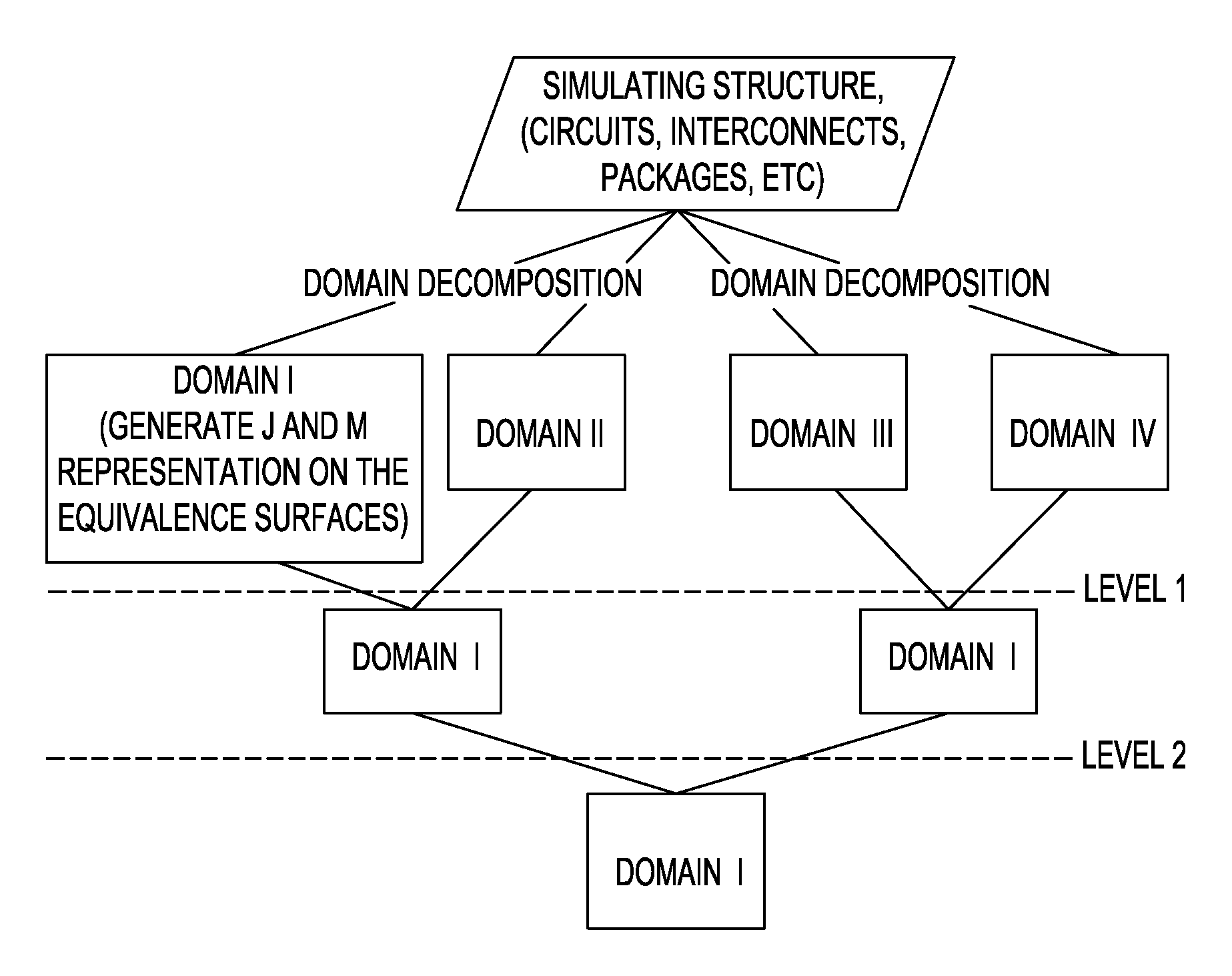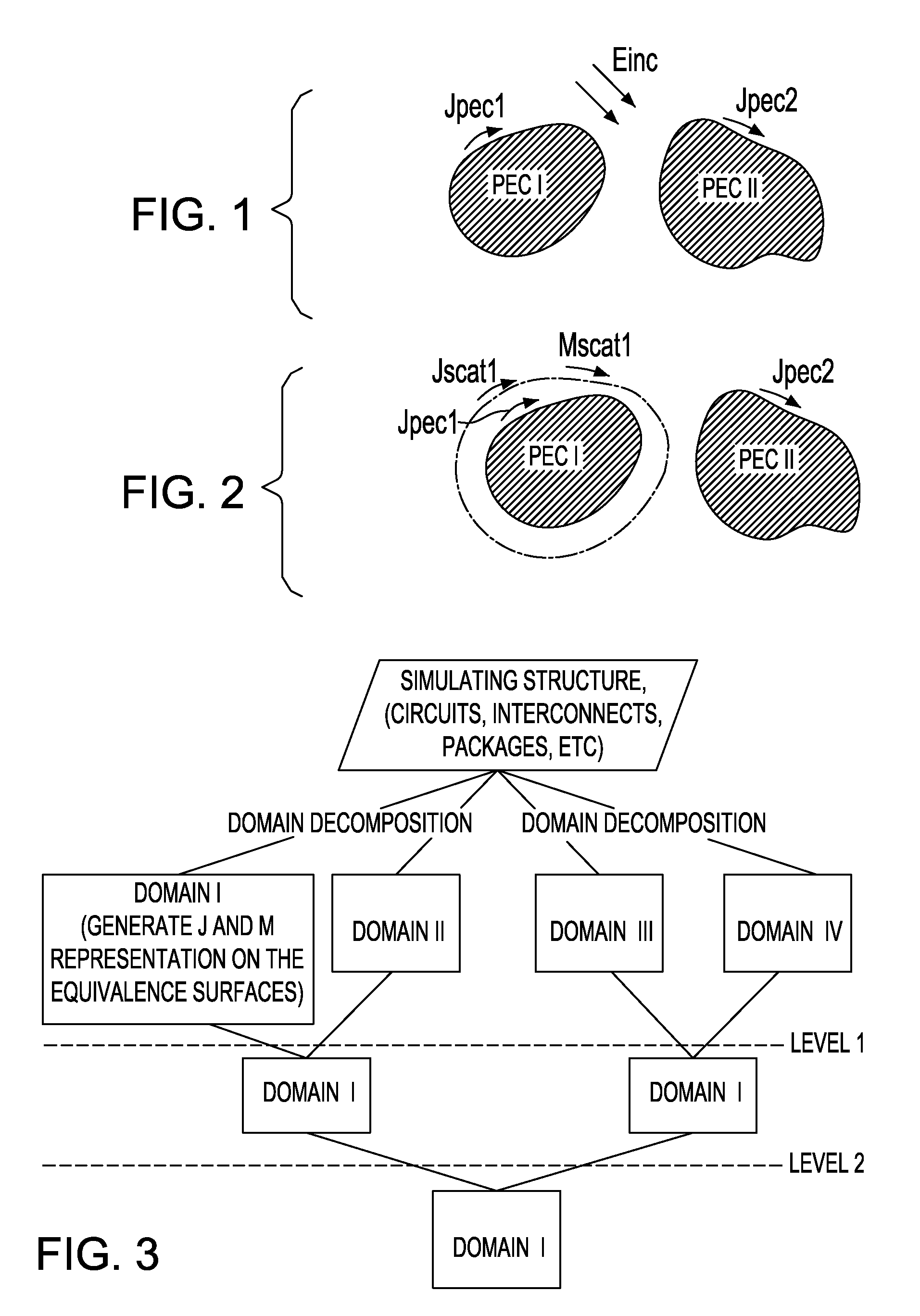Huygens' box methodology for signal integrity analysis
a signal integrity analysis and huygens box technology, applied in instruments, computations using denominational number representations, analogue processes for specific applications, etc., can solve problems such as computational processes, complex electromagnetic scattering of 3d objects using spherical wave manipulation, and difficult implementation processes, so as to achieve less complicated techniques or methods.
- Summary
- Abstract
- Description
- Claims
- Application Information
AI Technical Summary
Benefits of technology
Problems solved by technology
Method used
Image
Examples
Embodiment Construction
[0014]The invention includes a novel, simple and convenient methodology to implement the Huygens' Equivalence Principle algorithm using only electrical field integral equations (EFIE). The novel method may be treated as an extension of the reduced coupling method for implementing a rigorous solution. The novel method implements a variation on the NEPAL nesting scheme described in detail in Chew and Lu (1), Chew and Lu (2) and Lu and Chew (3), the Equivalence Principle Algorithm disclosed and described in Li and Chew (4) and Li and Chew (5), and implementation of reduced coupling method as described Rubin (6) and the '825 application.
[0015]The Huygens' Box Approach can be thought of as a mechanism for constructing a large structure, intended for electromagnetic analysis, from a set of smaller, non-overlapping regions. The Huygens' box approach is analogous to building a large model from Lego blocks, wherein each block is analyzed separately without regard to the others. That is, the ...
PUM
 Login to View More
Login to View More Abstract
Description
Claims
Application Information
 Login to View More
Login to View More - R&D
- Intellectual Property
- Life Sciences
- Materials
- Tech Scout
- Unparalleled Data Quality
- Higher Quality Content
- 60% Fewer Hallucinations
Browse by: Latest US Patents, China's latest patents, Technical Efficacy Thesaurus, Application Domain, Technology Topic, Popular Technical Reports.
© 2025 PatSnap. All rights reserved.Legal|Privacy policy|Modern Slavery Act Transparency Statement|Sitemap|About US| Contact US: help@patsnap.com



